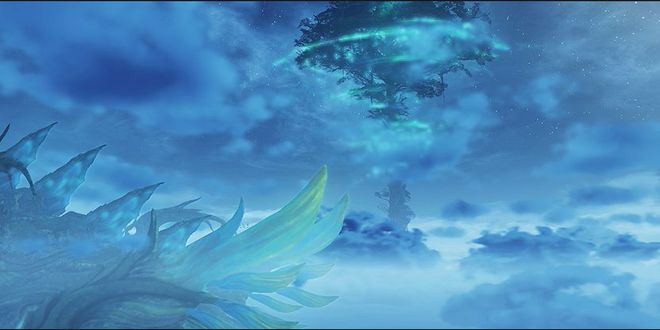
No Time to Alrest: Top 10 Xenoblade Chronicles locations
Ladies and gents, I’m calling it – it must be that time again. That special, magical time that only comes about once every five years or so. The time where you’ll find me deeply, and inextricably occupied for upwards of a month. Where I experience an irresistible propensity to slip choice phrases such as “I’m really feeling it,” and “I like your attitude” into daily conversation. Yes, it’s true: we have another Xenoblade Chronicles game on our hands.
With the release of Xenoblade Chronicles 3 putting a neat cap on one of the finest trilogies (sorry, X fans, you slip ever further into non-canon spinoff territory by the day) of JRPGs to grace our screens in some time, the good folk at Monolith Soft have proven they’re anything but off their game. With a sprawling world; an emotional, thematically rich, character-driven story; and a whole bevy of improvements to the combat system of the prior two adventures, I’m smitten. So much so that I’ve already managed to sink 50 hours into the sucker. Frankly, you’re lucky I’m even finding the time to write this feature.
The Xenoblade series would be naught without its exciting array of colorful, otherworldly locales. From exotic vistas to bustling cityscapes, and even the occasional nightmarish post-apocalyptic wasteland. Y’know, for variety. In this article, I’m taking you all for a journey across Bionis, Mechonis, Alrest and Aionios – a little sightseeing trip to break down my personal top 10 favorite destinations from across the saga. Strap on your Monados and pop open a Core Crystal with the boys. We’re off.
#10: Eryth Sea (Xenoblade Chronicles)
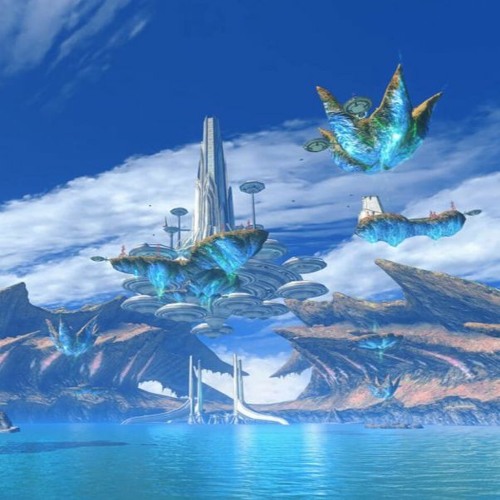
Starting things off with an oceanic view. Eryth Sea is unique among the Xenoblade Chronicles maps in that it’s… well, a sea. Up to this point in the game, we’ve had grass, caves, and, uh, grassy caves. The occasional tree, too. In other words, not much in the way of water, discounting the murky pools surrounding Colony 9. Granted, all this verdant greenery is presented in some neat ways and with some truly surreal landscaping, which we’ll be seeing further down the list; but to suddenly emerge upon this vast expanse of H2O, especially coming as it does on the heels of Makna Forest (which is, by its nature, nothing BUT flora), is a magic moment.
Sparkling blue waters beckon the curious to go for a swim, discovering hidden little island grottos and Krabble habitats, filling out the map as you go. True fans know the sheer rage that comes with painstakingly charting every corner of this vast ocean manually, only to discover the game finishes the map for you once you hit all its landmarks. That’s 3 hours down the toilet. Thanks, Monolith. In short, Eryth marks a wonderful change of pace for the adventure. It sets off my explorer’s instincts like never before, so it quite comfortably makes the list.
#9: Mor Ardain (Xenoblade Chronicles 2)
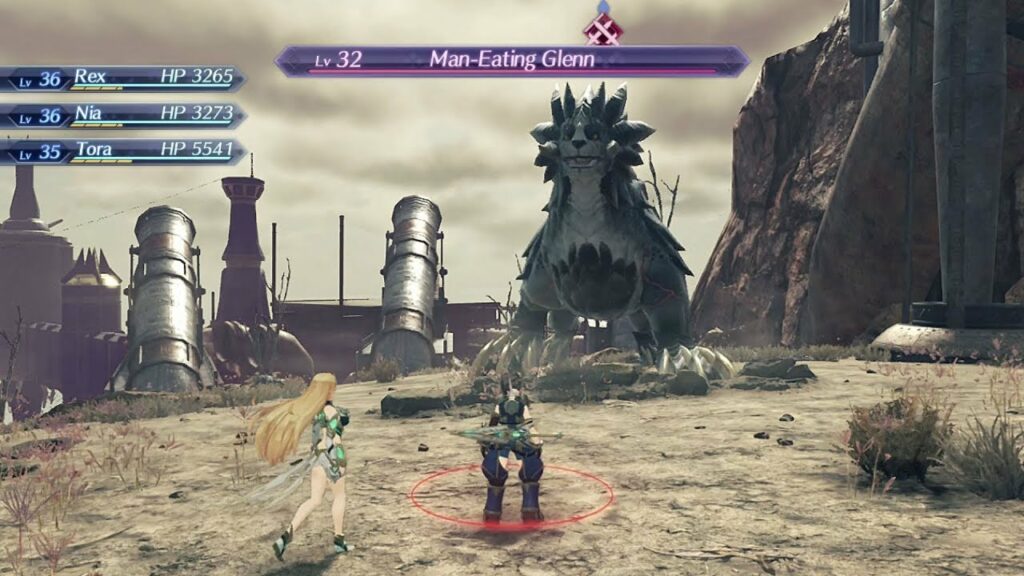
Popping over to Xenoblade Chronicles 2’s Alrest now, we have the smoky, barren land of Mor Ardain. As one of the two key factions in a war that forms the backdrop of the game’s story, the writers show remarkable restraint in not letting you actually visit the kingdom until tens of hours in.
What they do instead is build it up. While Uraya, the opposing side, are largely flourishing despite the conflict (seriously, a few grain shortages and a cancelled theatre performance seem to be the extent of their woes), we’re told in no uncertain terms that Mor Ardain is dying. Famine runs rampant, and they’ve had to colonize the peaceful region of Gormott just to sustain their populace. Once you finally get there, it’s clear why.
Heavily industrialized and paying the price for it, the kingdom is made up of rusting cities and abandoned factories, belching smoke into an ashen, grey sky. The capital city is grubby, children run around looking gaunt and barefoot, and the landscape is dry, cracked and deserted. Quite literally: the place is a desert. Mooching around, especially with Morag (the kingdom’s protector) in your party, really drives home the human element of the story, and it’s all topped off with a completely kickass bit of theme music. It just may be one of my favorite compositions in any RPG. For all these reasons, as well as the rampant, hysterical Scottishness of their regional dialect, Mor Ardain grabs the ninth spot on the list.
#8: Makna Forest (Xenoblade Chronicles)
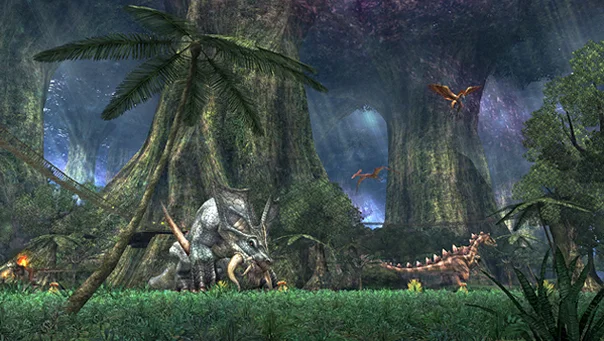
Returning to Bionis, we’re stopping off at Makna Forest. I may have a bit of a biased soft spot for this region. It’s where we meet Melia Antiqua, my favorite party member from the first game – but even putting that aside, it’s a cool map. You’re ascending the Bionis’ back at this point, and the various cliffs and towering trees of this area play with perspective, often to nauseating effect. Vertigo sufferers need not apply.
This is all to say nothing of the bloody dinosaurs casually wandering about at level 99, willing to rip you several new ones. The forest is also home to the Nopon village, which gets a nod from me both for its sheer cuteness and for the amount of time I spend climbing up and down that accursed central staircase, tending to all the citizen’s problems. Fluffy little buggers may promote hierarchical capitalism with an iron fist, but you can’t say no to those eyes. Makna Forest swoops in like a deranged Pterix and takes slot eight.
#7: Leftheria (Xenoblade Chronicles 2)
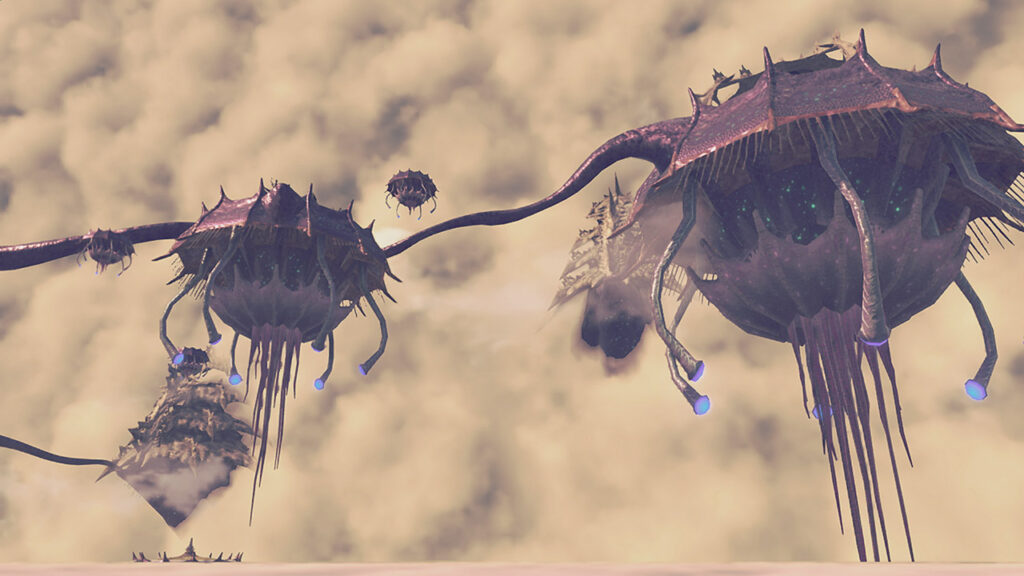
Back to Xenoblade Chronicles 2 for Leftheria. This is a bit of a special one, as it’s protagonist Rex’s homeland. Though he spends most of his days riding the Cloud Sea with his Titan buddy Gramps, he mentions the village Fonsett (nestled atop an archipelago) every so often, and it’s nice to finally get to see it about halfway through the adventure. His adoptive family are adorably excited to have him visit, and we are allowed to meander around this sleepy little hamlet, learning a bit more lore about the legendary Addam. Who you too can play as if you fork over cash for the DLC. Ta.
Sandwiching this placid detour just before the third act is a smart move. It gives the player a little bit of downtime before things really, really kick off in a few hours. Leftheria itself is also gorgeous, with roads made from the serpentine backs of dozing Titans. There’s numerous hidden crannies concealing ancient weaponry. Call me a soft touch, but the sentimental value of the place earns it spot number seven.
#6: Indol (Xenoblade Chronicles 2)
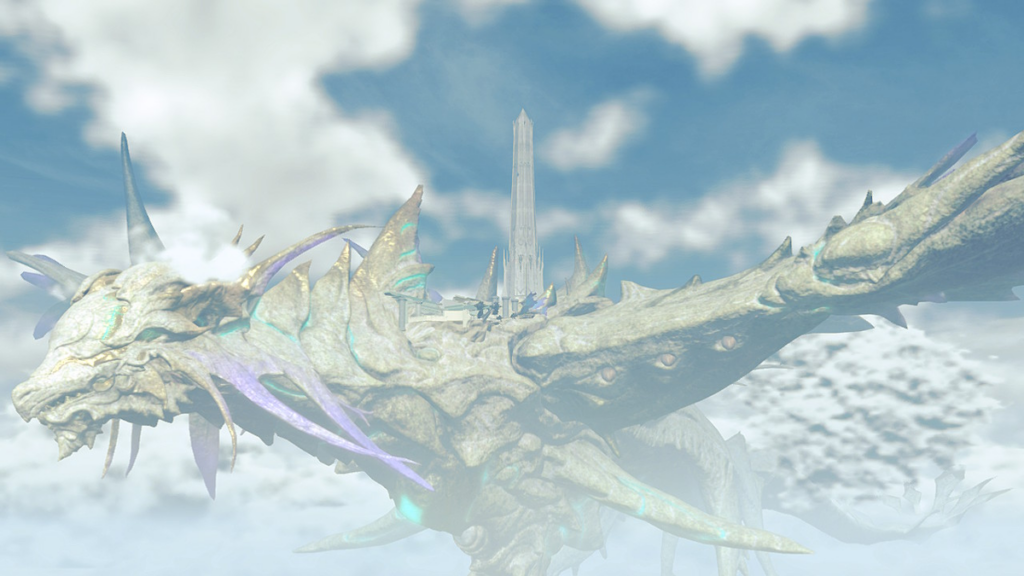
Things are getting a little bit religious now as we head to the Indoline Sanctum, or Indol for short. This is where you’ll find Praetor Amalthus, the morally questionable blue-looking dude who dictates which Blades will and won’t be born, editing their genetic structure to ‘scrub’ it of anything he doesn’t like. Given that Blades are, for all intents and purposes, sentient living beings, this is all kinds of messed up – and to the game’s credit, it knows this. Let’s just say you may be seeing the word ‘Amalthus’ next to a boss’ health bar at some stage.
Religious parallels come thick and fast in all the Xenoblade games, and it’s especially exemplified in the Indol environment. Latin choirs and church bells boom from the soundtrack as you explore towering, pristine spires and chapels. Beneath the glistening exterior lies a network of dark, twisting tunnels that reveal the land’s true nature in a great use of visual storytelling. No spoilers, though. Because I’m a sucker for the aesthetic, and for its thematic significance, Indol has its prayers answered and snags the sixth slot.
#5: Uraya (Xenoblade Chronicles 2)
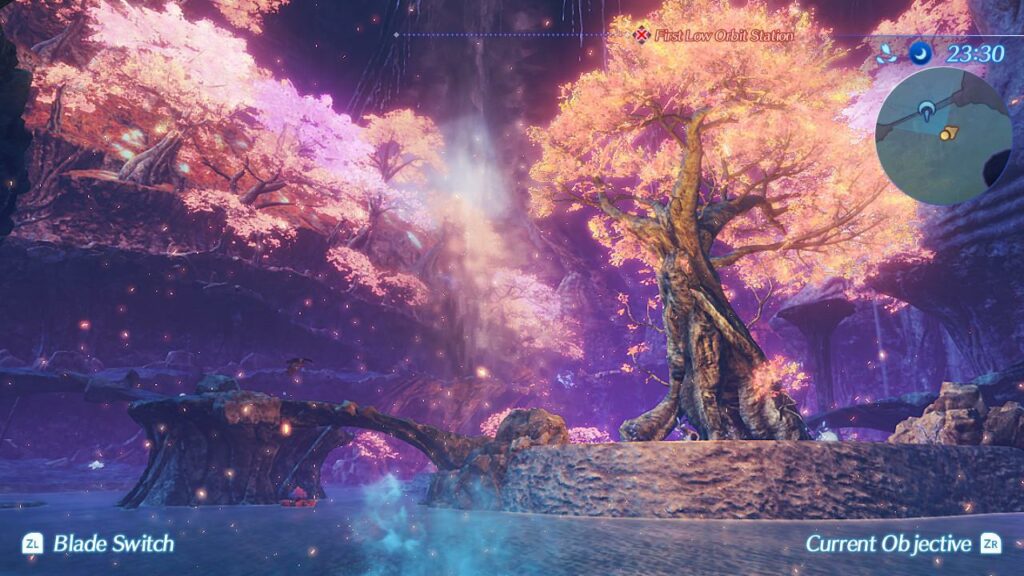
Halfway down the list, we hit Uraya, the other, distinctly more Aussie, side of the conflict with Mor Ardain we touched on earlier. Plopped astride a gigantic beast that’s become so iconic he’s on the cover of Xenoblade 3, this vibrant, technicolor land is as much a visual contrast to the downtrodden Mor Ardain as it’s possible to draw. It looks pretty enough by day, with a bustling town center and cozy campsites. But then nighttime hits – and if those gamer hairs on the back of your neck don’t stand on end, I don’t know what to say to you.
Large pools of water reflect deep hues of blue and purple, emanating from neon trees. Countless stars sparkle in an inky black sky. A huge manmade chute allows you to slide all the way from the top of the town to the expansive crop fields, which you’ll likely then spend hours grinding for wheat in. That one damn dumpling quest, I swear. Simply put, it’s a slice of gaming heaven and a real reminder that nobody does it quite like Nintendo. Welcome to spot five, Uraya.
#4: Eagus Wilderness (Xenoblade Chronicles 3)
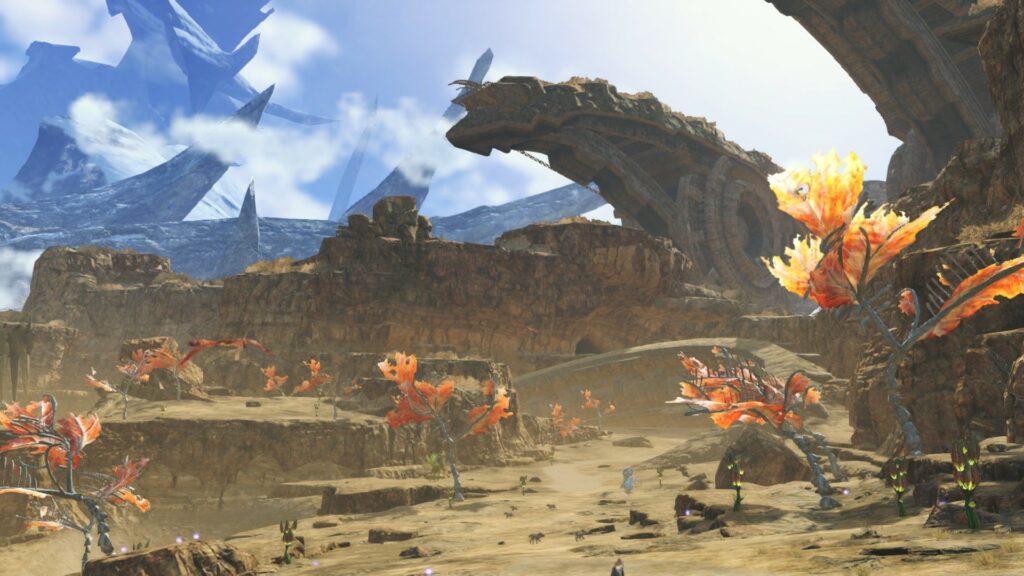
Now we come to the point where accusations of recency bias become ten times more viable. It’s our first Xenoblade Chronicles 3 inclusion on this list, Eagus Wilderness. In the lead-up to the game’s release, this place was all over Nintendo’s marketing, and the reasoning speaks for itself. It’s at once desolate and idyllic, abandoned but busy, cool yet warm, inviting but still… ‘get the hell out of here now’-ish.
Autumnal colors are the order of the day here, and I’ve already found myself getting totally lost in attempting to uncover every scrap of lore relevance this location has to offer. I’m maybe 80% sure there’s a Mechonis finger sticking out of the ground, maybe? And a couple of the landmarks have suspiciously similar names to ones we’ve seen before? Perhaps? I’m sure the fan wiki will tell me once it gets updated. Either way, the Wilderness is pure Xenoblade, and dash it all, it’s getting the fourth slot. Sue me. Lanz may fancy something a bit meatier, but I’m quite content with this.
#3: Gaur Plains (Xenoblade Chronicles) & Gormott (Xenoblade Chronicles 2)
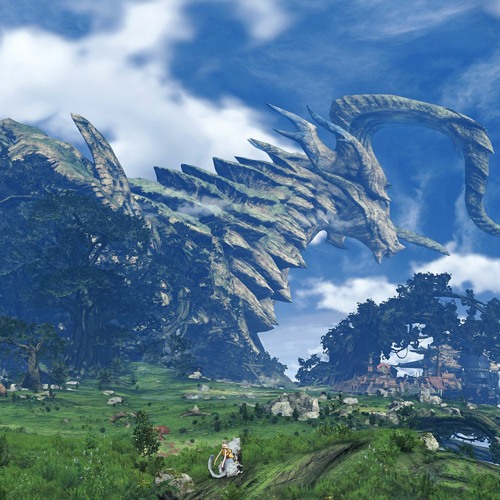
I’m slightly cheating here. Our next two locations are functionally identical and so similar in terms of visuals that I couldn’t mention one without acknowledging the other. So, welcome to third place, Xenoblade 1’s Gaur Plains and Xenoblade 2’s Gormott. Hope you like sharing. These aforementioned ‘big green field’ areas are to these games as Bob-omb Battlefield is to Super Mario 64. You’ve gotten the hang of the basic controls, so now here’s an innocuous, wide open space to muck around in.
There are no major hazards (save for a couple of devilishly placed superbosses) to speak of, not many ledges to fall off, and few movement restrictions. It’s just you, a big plain, and the game patting you on the head, giving you a cookie and saying “it’s all yours, champ.” This makes them the perfect introductory areas, instantly memorable long after you’ve beaten the game. It’s tough to pick a favorite – though I am inclined to give Gormott the edge because it encompasses Torigoth, a wonderfully quaint settlement with a beautiful piece of nighttime music. Plus, everyone there is Welsh. Easy points.
#2: Outer space (every game)
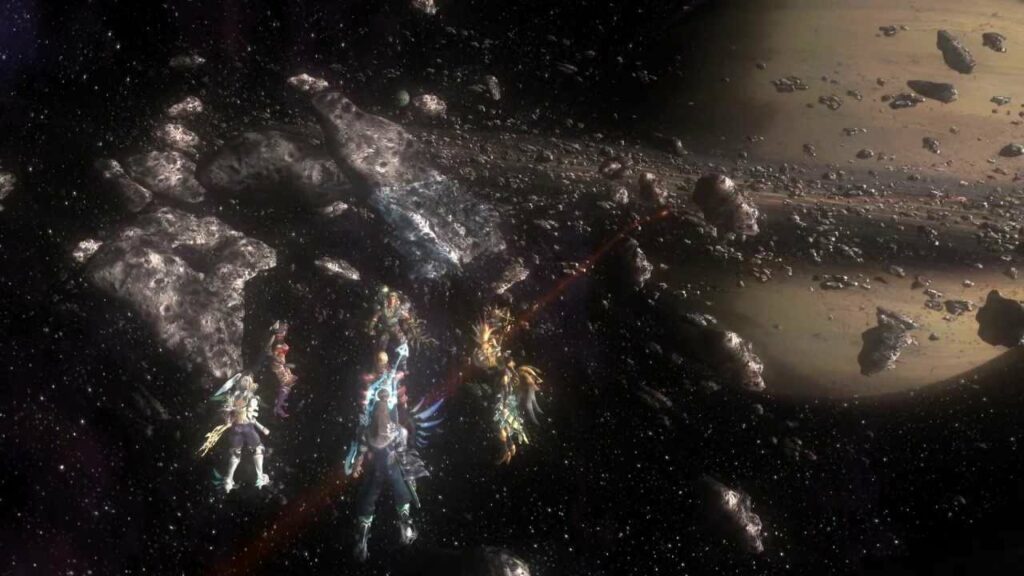
Now, this is going to be another double-barrel inclusion. One which I can’t really say much about for fear of spoiling it for newcomers. In fact, I feel like I’m walking on eggshells by even mentioning that this is a thing in the Xenoblade universe. It’s just such a mind-melting episode in both 1 and 2, and such a critical piece to the series’ overall direction, that I couldn’t ignore it.
So I’ll do this as tactfully as possible. Near the end of the first two games, you go to space. It’s a version of space that maybe, kinda, sorta, isn’t too far removed from the space you and I are familiar with. It maybe, kinda, sorta bridges the gap between the fantasy worlds we’ve been shown and something a bit more grounded. It maybe, kinda, sorta re-contextualizes everything up to that point in the story, connects two otherwise disparate adventures, and makes the assorted themes hit all the harder. And it may also be an absolute stroke of genius that sealed these games as modern classics. That’s it. ‘Tis all I’ll say. Except for this: nice going, Klaus.
#1: Colony 9 (Xenoblade Chronicles 1, Xenoblade Chronicles 3)
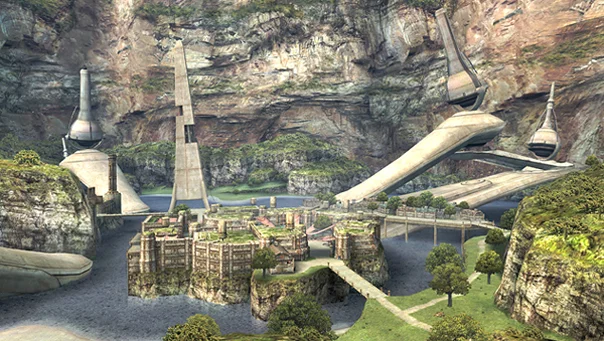
And so we come to my favorite Xenoblade area. I weighed up several options for this, including 2’s Argentum and a few of my new highlights from 3. Ultimately, I settled on the only logical choice: where it all began. Colony 9, which actually does put in an appearance in 3 (and which makes me wonder what life was like in Colonies 1 through 8) holds a special place in every Xeno fan’s heart. As the start of Shulk’s adventure, and the town you’ll be spending by far the most time in throughout the game. What with its interminable side quests and affinity opportunities. It just has a certain air about it I can’t quite describe.
All the elements you’ll be interacting with across the game are introduced here. Masterfully smooshed together into a digestible area for you to experiment with. The townsfolk are many and friendly, the architecture charmingly offbeat. Local wildlife is suitably low-level for some early game EXP grinding. You could quite easily spend the first five or so hours of your run here, and you’ll feel so attached to this homely region that by the time things go Pyra’s-chest-up and it’s attacked, it’s like a stab in the gut. Nostalgia, sentimentality, call it what you will: Colony 9 represents many gamers’ first outing into this wonderfully bonkers universe, and thus it deserves nothing other than the top spot.
Closing thoughts
That wraps up our whistle-stop tour of the very best sights the Xenoblade Chronicles saga has to offer. I do hope nobody picked up any critical injuries during the trip, because God knows Sharla won’t be healing them (when she ain’t on the bench, that is). From forests, to oceans, to cities, to even the final frontier itself, there really is a locale for everyone in this generous helping of JRPG bliss. I’ve held back for pretty much the entire article, so I hope you’ll indulge me just once. When it comes to the world design, I’m really feeling it.
Whether you’re digging into Xenoblade 3 at the same time as me, or just about to dive into Shulk’s inaugural quest, we’d love to hear your thoughts on our picks. Anything we missed? Anything you’d have left out? We can’t quite see the future (our ether goggles are busted for the moment), so until you post your comment, we’ll never know!

